
IRANIAN POLYMER JOURNAL
Scope & Guideline
Elevating Research Standards in Polymer Studies
Introduction
Aims and Scopes
- Polymer Synthesis and Modification:
Research related to the development of new polymerization techniques, including the synthesis of novel polymers and the modification of existing polymers to enhance their properties. - Polymer Composites:
Studies focusing on the formulation and performance of polymer composites, including the incorporation of natural and synthetic fibers, nanofillers, and other additives to improve mechanical, thermal, and electrical properties. - Biodegradable and Biocompatible Polymers:
Research on the development and application of biodegradable polymers and composites for environmental sustainability and biomedical applications. - Polymer Characterization Techniques:
Innovative methodologies and techniques for the characterization of polymers and composites, including mechanical, thermal, and rheological properties. - Applications of Polymers in Various Industries:
Exploration of polymer applications across different sectors, including packaging, biomedical, construction, and automotive industries, highlighting their practical implications. - Nanocomposite Materials:
Research on the synthesis and application of polymer-based nanocomposites, focusing on their enhanced properties and functionalities for advanced applications.
Trending and Emerging
- Sustainable and Green Polymers:
An increasing number of publications focus on the development of sustainable polymers derived from renewable resources, aiming to reduce environmental impact and promote circular economy. - Smart and Responsive Polymers:
Research on smart polymers that respond to environmental stimuli (e.g., pH, temperature) is gaining traction, with applications in drug delivery, sensors, and self-healing materials. - Nanotechnology in Polymers:
The integration of nanotechnology in polymer research is becoming more prominent, focusing on enhancing the properties and functionalities of polymeric materials through nanofillers and nanostructures. - Biomedical Applications of Polymers:
There is a growing trend towards the exploration of polymers for biomedical applications, including drug delivery systems, tissue engineering scaffolds, and biocompatible materials. - Polymer Recycling and Upcycling:
Research on polymer recycling technologies and methods to upcycle waste polymers into valuable materials is increasingly significant, reflecting global sustainability goals.
Declining or Waning
- Traditional Polymer Processing Techniques:
Research related to conventional processing methods such as extrusion and molding is becoming less frequent, possibly due to the increasing focus on advanced processing techniques like 3D printing and additive manufacturing. - Basic Polymer Chemistry:
Fundamental studies on basic polymer chemistry and mechanisms are observed to be waning, as the field shifts towards more application-oriented research and interdisciplinary approaches. - Non-biological Polymer Applications:
There is a noticeable decrease in studies centered around non-biological applications of polymers, as more emphasis is placed on biodegradable and environmentally friendly materials.
Similar Journals

INTERNATIONAL JOURNAL OF POLYMER ANALYSIS AND CHARACTERIZATION
Advancing the frontiers of polymer science.International Journal of Polymer Analysis and Characterization is a distinguished scholarly publication dedicated to the field of polymer science, with a focus on innovative methodologies and significant advances in the analysis and characterization of polymeric materials. Published by Taylor & Francis Ltd in the United Kingdom, this journal serves as a vital resource for researchers, professionals, and students deeply engaged in Analytical Chemistry, Chemical Engineering, and Polymer Science. With a convergence spanning from 1995 to 2024, it holds a Q3 ranking in the 2023 category quartiles for its valuable contributions to the fields of Analytical Chemistry, Chemical Engineering, and Polymers and Plastics. Despite being a non-open access publication, its rigorous peer-review process and comprehensive coverage of current trends ensure that the journal remains a crucial platform for disseminating impactful research. The journal is indexed in various databases, underscoring its relevance and quality in the academic community. Exploratory studies and articles that push the boundaries of polymer analysis find a welcoming home within these pages, making it an essential read for those aiming to stay at the forefront of polymer research.

JOURNAL OF POLYMER SCIENCE
Advancing the Frontiers of Polymer InnovationJOURNAL OF POLYMER SCIENCE, published by WILEY, is a premier, open-access journal dedicated to advancing the field of polymer science and its applications. With an ISSN of 2642-4150, it offers a platform for high-quality research and innovative ideas, contributing significantly to the understanding of polymaterials and their functionalities. The journal is recognized for its exceptional impact within various categories, consistently achieving Q1 rankings in Materials Chemistry, Physical and Theoretical Chemistry, and Polymers and Plastics, demonstrating its influential presence in the academic community. As of 2023, it holds a distinguished position in Scopus rankings, underscoring its relevance and rigorous peer-review process. By facilitating open access to vital research findings, the JOURNAL OF POLYMER SCIENCE plays a crucial role in fostering collaboration and knowledge transfer among researchers, professionals, and students, paving the way for innovative developments in polymer applications and materials science.

JOURNAL OF VINYL & ADDITIVE TECHNOLOGY
Elevating Standards in Vinyl and Additive ResearchJOURNAL OF VINYL & ADDITIVE TECHNOLOGY, published by Wiley, is a pivotal resource in the fields of Chemical Engineering, Chemistry, and Materials Science, offering a platform for the dissemination of cutting-edge research from 1989 to the present. With its ISSN 1083-5601 and E-ISSN 1548-0585, the journal operates from the UK and is notable for its diverse coverage, including insights into polymers, plastics, and innovative marketing strategies specific to this niche. Holding a commendable positioning within the Q2 category in Chemical Engineering and Chemistry, alongside notable ranks in Materials Chemistry and Marketing, this journal delivers impactful research essential for professionals, academics, and students alike. Though not an Open Access journal, it is indexed in prestigious databases, ensuring accessibility to vital findings in vinyl and additive technology. Researchers looking to stay at the forefront of material innovations will find this journal an invaluable asset.
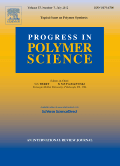
PROGRESS IN POLYMER SCIENCE
Exploring New Dimensions in Polymer ApplicationsPROGRESS IN POLYMER SCIENCE is a prestigious academic journal published by PERGAMON-ELSEVIER SCIENCE LTD, dedicated to advancing the field of polymer science. With an ISSN of 0079-6700 and an E-ISSN of 1873-1619, this journal has established itself as a leading source of high-quality research since its inception in 1967. It ranks in the top quartile (Q1) across multiple categories including Ceramics and Composites, Materials Chemistry, Organic Chemistry, Polymers and Plastics, and Surfaces and Interfaces, reflecting its strong reputation and impact within the scientific community. The journal features rigorous peer-reviewed articles that not only contribute to theoretical advancements but also emphasize practical applications of polymer science in various industries. Although it is not an open-access journal, it remains accessible through institutional subscriptions and provides invaluable insights and data for researchers, professionals, and students alike. PROGRESS IN POLYMER SCIENCE is essential reading for anyone looking to stay abreast of the latest developments and innovations in this dynamic field.

POLYMER SCIENCE SERIES C
Unveiling the Future of Polymer SciencePOLYMER SCIENCE SERIES C is a distinguished journal published by MAIK NAUKA/INTERPERIODICA/SPRINGER, focusing on advancing research in the fields of polymer science and materials chemistry. With an ISSN of 1811-2382 and an E-ISSN of 1555-614X, this journal has been actively disseminating vital findings since its inception in 2000, aiming to converge knowledge and innovations until 2024. Operating out of the United States, it stands out with its current quartile rankings of Q3 across several categories, including Chemistry (miscellaneous), Materials Chemistry, and Polymers and Plastics, highlighting its evolving significance in the academic community. Despite its open access status, the journal attracts an engaged audience of researchers, professionals, and students, providing a platform for the publication of rigorous peer-reviewed articles that explore the intricacies of polymer synthesis, characterization, and applications. POLYMER SCIENCE SERIES C not only serves as a vital resource for keeping abreast of recent developments in polymer research but also stimulates interdisciplinary collaborations and innovative approaches in material science.
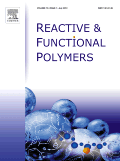
REACTIVE & FUNCTIONAL POLYMERS
Empowering Researchers with Cutting-Edge Polymer InsightsREACTIVE & FUNCTIONAL POLYMERS, published by Elsevier, is a leading journal in the field of polymer science, focusing on the innovative development and application of reactive and functional polymers. With an impressive impact demonstrated through its classification in various prestigious categories, including Q1 rankings in Chemical Engineering, Chemistry, and Materials Chemistry, this journal serves as an essential resource for researchers and professionals seeking to explore the latest advances in polymer research. With a broad scope that encompasses topics from biochemistry to environmental chemistry, and a convergence of significant findings from 1995 to 2024, REACTIVE & FUNCTIONAL POLYMERS fosters academic dialogue and collaboration among scientists. The journal also features Open Access options, ensuring that groundbreaking research is readily available to a global audience. By consistently publishing high-quality articles, it not only enriches the scientific community but also drives innovation across various industries reliant on polymer technologies.
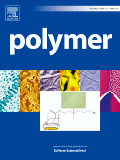
POLYMER
Exploring Innovations in Materials ChemistryPOLYMER, an esteemed journal published by Elsevier Science Ltd, stands at the forefront of polymer science, presenting cutting-edge research that encompasses the realms of Materials Chemistry, Organic Chemistry, and Polymers and Plastics. With a remarkable impact factor reflecting its significance in the academic community, POLYMER has been a vital resource since its inception in 1960, contributing to a converged body of knowledge through to 2024. Rated Q1 in all relevant categories as of 2023, and boasting impressive Scopus rankings, this journal not only facilitates advanced discussions in polymer synthesis, characterization, and applications but also serves as a critical platform for collaborative research among scholars, professionals, and students. While it offers content primarily via subscription, POLYMER remains dedicated to fostering innovation and excellence in the field, making it an essential read for anyone passionate about polymer science.
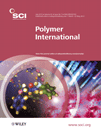
POLYMER INTERNATIONAL
Driving Excellence in Polymer ResearchPOLYMER INTERNATIONAL is a leading journal in the field of polymer science, published by Wiley, one of the most esteemed scholarly publishers. With an ISSN of 0959-8103 and an E-ISSN of 1097-0126, this journal has been a pivotal platform for researchers since its inception in 1991, now extending its coverage until 2024. The journal boasts a commendable standing in various scientific domains, achieving a Q2 quartile ranking in Materials Chemistry, Organic Chemistry, and Polymers and Plastics as of 2023. Additionally, it holds impressive Scopus ranks, including Rank #47 in Organic Chemistry and Rank #40 in Polymers and Plastics, placing it within the top percentiles of its categories. Researchers, professionals, and students alike can benefit from its rich array of articles that contribute to the understanding and advancement of polymer technology and materials science. Although not an open access journal, POLYMER INTERNATIONAL remains crucial for disseminating high-quality research that drives innovation and development within the field.
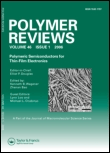
Polymer Reviews
Advancing the frontiers of polymer science.Polymer Reviews, published by Taylor & Francis Inc, is an esteemed journal dedicated to the intricate and evolving field of polymer science. With its ISSN 1558-3724 and E-ISSN 1558-3716, the journal has established a significant presence among researchers and practitioners alike, evidenced by its impressive categorization in the Q1 quartiles across multiple disciplines, including Biomedical Engineering, Materials Chemistry, and Renewable Energy. Since its inception in 2006 and continuing through 2024, Polymer Reviews has consistently aimed to advance the knowledge base of polymer applications and innovations, providing a platform for comprehensive review articles that stimulate further research and inspire practical solutions. The journal, ranking within the top percentile across several Scopus categories, underscores its impact and relevance in a rapidly developing scientific landscape. Though not an open-access journal, it remains a vital resource for those invested in the future of materials science and engineering.
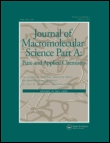
Journal of Macromolecular Science Part A-Pure and Applied Chemistry
Elevating Standards in Chemistry Research and InnovationWelcome to the Journal of Macromolecular Science Part A - Pure and Applied Chemistry, a distinguished publication dedicated to advancing the understanding of macromolecular science, encompassing critical areas such as polymers, materials chemistry, and composites. Published by Taylor & Francis Inc, this journal has firmly established its place within the scientific community, evident from its ranking in the Q2 and Q3 quartiles across various categories in the latest assessments, including Polymers and Plastics as well as Ceramics and Composites. With a commitment to providing high-quality peer-reviewed content, the journal aims to facilitate knowledge exchange and innovation among researchers and practitioners from around the globe. The absence of open access underscores the journal's commitment to maintaining rigorous editorial standards while remaining accessible to its readership. As the journal converges through valuable research contributions from 1992 to 2024, it continues to be a pivotal resource for professionals and students seeking to explore the latest advancements and applications in the field of macromolecular science.